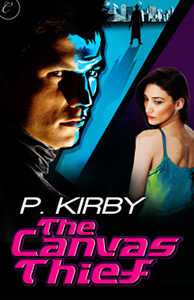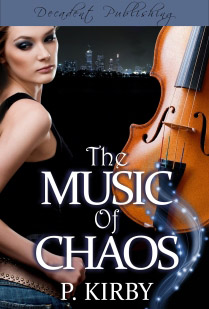Here in New Mexico, the local schools use a program called Character Counts to uh, indoctrinate teach kids to be good little cogs in the machine how to play well with others. Whether or not this actually works is debatable. What has always struck me about Character Counts is how those words are essentially nonsense, word salad. Serious, what does “Character counts” mean?
Here’s where someone wearily says, “You know what it means.”
No, I don’t. At least not absent the whole campaign that goes with the program. “Character counts” what? Sheep? Cards?
Words do mean … stuff. But meaning and clarity are a function of a whole bunch of other words. One of the most common problems I see when critiquing stories over at Critters is a total lack of clarity. Often this is because the writer is so excited about their story, the words flowing so fast, that they forget about the reader or assume the reader has super-duper mind reading powers.
Sometimes, it’s because they’ve read Award Winning Author’s Big Book of Writing Fiction and learned that action equals short sentences. Pow! Pow! Pow! Speedy!
The following is a made-up example of what I mean:
Karli, anxious and angry, drove her Miata fast down Main Street. She had just bought this car and she loved everything about it.
Turning the corner, she saw him. The tires screeched as she stopped and jumped out of the car. He turned and his red eyes shone like crimson suns.
“You’re not getting away this time!” she yelled and aimed a roundhouse kick at his head. He roared and dodged her blow. Karli pressed on, raining punches at his face and chest. He staggered back, but laughed evilly and grabbed her right wrist. She screamed as his fingers burned her skin.
She drew her sword, but he grabbed it from her and stabbed her. She fell and her back exploded in pain. Blood soaked her hair.
Helpless, unable to move, she watched as he approached, his boots clomping on the sidewalk.
Well, it’s uh, energetic. It’s also a mess.
Karli, anxious and angry, drove her Miata fast down Main Street. Meh. “Anxious and angry” isn’t compelling if I don’t know the character. She had just bought this car and she loved everything about it. And…? This little bit of info tells me nothing about the character. Nothing.
Turning the corner, she saw him. The tires screeched as she stopped and jumped out of the car. Stopped the car, where? The middle of the street? I thought she “loved” this car. He turned and his red eyes shone like crimson suns. Either he’s some kind of demony thing or he has a ferocious case of pink eye.
“You’re not getting away this time!” she yelled and aimed a roundhouse kick at his head. Eh? Where is she? Did she run over to him? Or vice versa? He roared and dodged her blow. O-kay. So now I know he roars. Lion? Karli pressed on, raining punches at his face and chest. He staggered back, but laughed evilly [“Evilly” The most annoying adverb in the history of ever.] and grabbed her right wrist. She screamed as his fingers burned her skin. Why do his fingers burn her skin? Is he on fire?
She drew her sword, but he grabbed it from her and stabbed her. Just like that? Grabbed it that easily? So is she totally inept? She fell and her back exploded in pain. Why did her back explode in pain? Did he stab her in the back? Did she land on a bed of nails? Blood soaked her hair.
Helpless, unable to move, she watched as he approached, his boots clomping on the sidewalk. And … now I know he wears boots, whatever he is. Nekkid, boot-wearing demon with a bad case of conjunctivitis.
What’s missing in my example is any description of the scene. Yeah, action scenes are often made up of short sentences. But before you go there, you need to set the scene. In the above, I have no idea where Karli is. Is she driving down a two-lane road or a multi-lane highway? Where is her opponent? Strolling along the sidewalk? Is there a sidewalk?
Even worse, the description of the action is the work of a scattered mind. It’s like the character has Nightcrawler’s ability to teleport herself. Karli jumps out of the car and–Bamf!–she’s next to the bad guy. Bamf!–she punching him. Bamf!–he’s caught her. Bamf!--Sword is drawn, stolen and she’s stabbed.
In real life, stuff may happen this fast in a fight. But this isn’t real life. Fight scenes in fiction and in movies are much more drawn out. Because of a little somethin’ called “drama.”
When in doubt, overwrite. Tell the reader that Karli stops the car by the curb, in a fire zone; gets out of the car without turning off the engine; leaps over the car hood in her haste to reach the villain; bangs her knee on the fire hydrant; steps on a wad of spearmint gum, etc. You can always delete the unnecessary parts on revision.
Paint me a picture. Don’t be coy. I need details. If there’s something that you are intentionally withholding from the reader, like the villain’s identity, it’s all the more important that the other details be there.
If she’s “anxious and angry,” tell me why: “She was anxious and angry and ready to kill the six-foot demon who killed her father.” (<=Yes, that’s lame, but at least I know why she’s upset and spoiling for a fight with a supernatural baddie.)
And for dog’s sake, don’t assume I know what you mean. “Red eyes” could mean anything: pink eye, colored contacts. Heck, maybe he’s Emo-Demon and he’s been crying. “His fingers burned her skin” is evocative, but really doesn’t tell me what the villain is. For all I know he’s an Alien and he has acid blood.
My point. Don’t reduce your story to a series of empty slogans. Because …clarity counts. 😉



